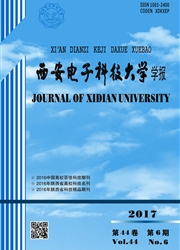

 中文摘要:
中文摘要:
针对认知无线电系统中次级用户的感知接入问题,提出了一种频谱感知与接入机会联合建模的优化方法。该方法考虑了频谱感知对次级用户接入机会的影响并分析了用户间分布对次级用户接入机会的作用,使次级用户系统能够根据不同的应用场景工作在最佳状态。而目前现有的相关工作忽视主次用户之间在空间分布上的关系,使理论分析不能够匹配实际问题。仿真结果验证了,本文提出的联合建模方法能够匹配实际情况,利用此方法设置次级用户系统可以使其频谱利用效率最高。
 英文摘要:
英文摘要:
This paper proposes jointly optimizing the access opportunity and spectrum sensing to achieve the maximum efficiency of spectrum utilization for the secondary user. In cognitive radio, the opportunistic access interwinded with spectrum sensing plays a key role in determining the performance of the secondary system. However, current related research neglects the relationship between primary user and secondary user in the spatial domain, which leads to incorrect evalution of the quantity of available access opportunity for the secondary user. To deal with this problem, a closed-form function is derived to Calculate the secondary medium access probability with regard to the impact of spectrum sensing and user spatial distribution. By using this derived closed-form function, the secondary user can obtain the optimum sensing configuration to ensure the efficient spectrum utilization of the secondary system. Simulation results show the correctness of the closed-form function and the efficiency of the related optimization.
 同期刊论文项目
同期刊论文项目
 同项目期刊论文
同项目期刊论文
 Network lifetime optimization under QoS Constrains for coded cooperative networks by dynamic resourc
Network lifetime optimization under QoS Constrains for coded cooperative networks by dynamic resourc Optimal power control for cognitive radio networks under coupled interference constraints: A coopera
Optimal power control for cognitive radio networks under coupled interference constraints: A coopera 期刊信息
期刊信息
